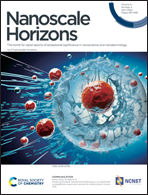Synthesis of high-entropy germanides and investigation of their formation process†
Abstract
High-entropy alloys and compounds have emerged as an attractive research area in part because of their distinctive solid-solution structure and multi-element compositions that provide near-limitless tailorability. A diverse array of reports describing high-entropy compounds, including carbides, nitrides, sulfides, oxides, fluorides, silicides, and borides, has resulted. Strikingly, exploration of high-entropy germanides (HEGs) has remained relatively limited. In this study, we present a detailed investigation into the synthesis of HEGs, specifically AuAgCuPdPtGe and FeCoNiCrVGe, via a rapid thermal annealing. The structural, compositional, and morphological characteristics of the synthesized HEGs were assessed using laboratory X-ray diffraction (XRD), Fourier-transform infrared spectroscopy (FTIR), X-ray photoelectron spectroscopy (XPS), and transmission electron microscopy (TEM). Complementing these post-synthesis analyses, we interrogated the formation and growth mechanisms using in situ heating XRD and TEM and determined that HEG formation involved initial decomposition of germanane (GeNSs) during the annealing, followed by gradual grain growth via atom diffusion at temperatures below 600 °C, and finally a rapid grain growth process at elevated temperatures.

- This article is part of the themed collections: Nanoscale Horizons 10th anniversary regional spotlight collection: The Americas and Celebrating Professor Geoffrey Ozin's 80th Birthday


 Please wait while we load your content...
Please wait while we load your content...